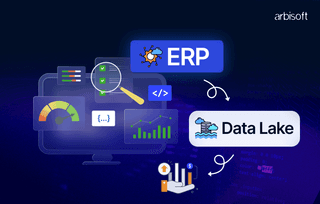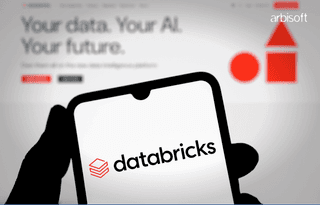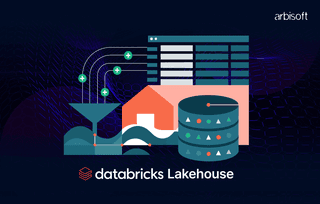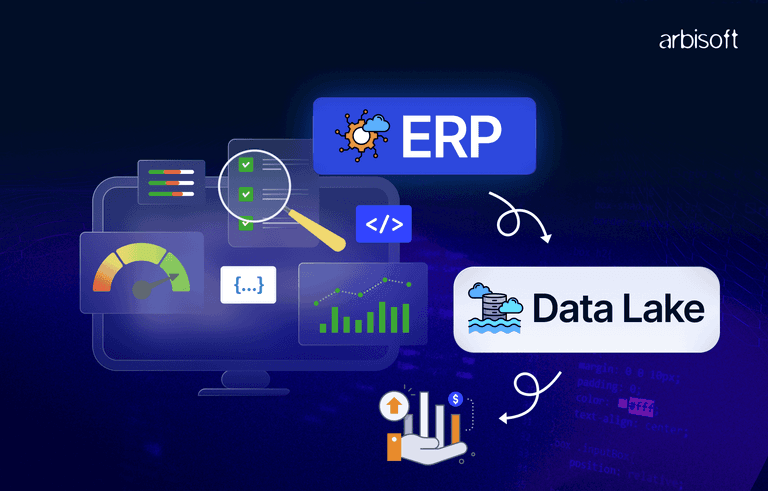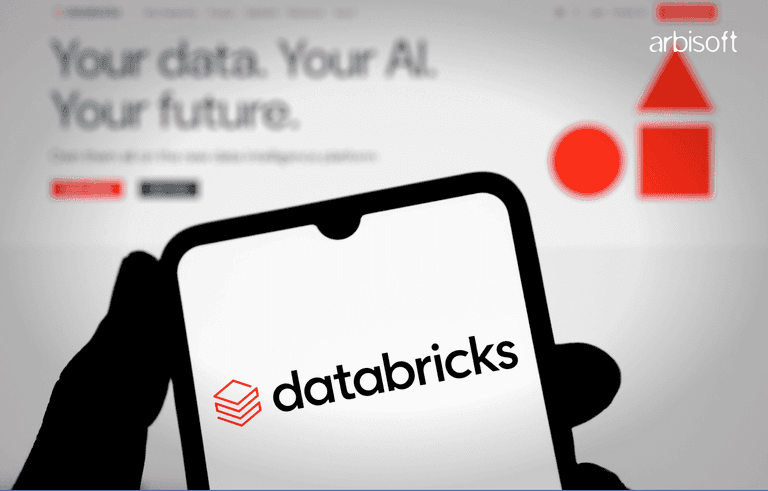We put excellence, value and quality above all - and it shows




A Technology Partnership That Goes Beyond Code

“Arbisoft has been my most trusted technology partner for now over 15 years. Arbisoft has very unique methods of recruiting and training, and the results demonstrate that. They have great teams, great positive attitudes and great communication.”
Hyper-personalization with Generative AI: Transforming User Experiences

The sheer volume of data generated every day is staggering. We're talking about quintillions of bytes! And within this vast sea of data lies a treasure trove of insights waiting to be unlocked. Traditional personalization techniques have tapped into this data goldmine to tailor user experiences based on historical behavior and demographics. But here's where hyper-personalization steps in, leveraging the capabilities of generative AI to push the boundaries even further.
Generative AI, as discussed in our previous blog in detail - these advanced AI models are trained on massive datasets. They enable them to not only analyze patterns but also to generate original content, seamlessly translate languages, and even mimic human-like writing. This means that hyper-personalization isn't just about tweaking recommendations based on past behavior - it's about creating dynamic, and unique experiences in real-time.
Now, let's talk numbers. Hyper-personalization allows:

Let's delve into the heart of hyper-personalization and explore its transformative potential.
Understanding Hyper-personalization
Traditional personalization techniques typically rely on historical data, such as past browsing behavior and demographic information, to customize content and recommendations for users. However, the advent of hyper-personalization takes this concept to a whole new level. Unlike traditional methods, hyper-personalization doesn't just look at static data; it delves into real-time factors like context, emotional state, and individual preferences.
Let's break it down a bit. Imagine you're browsing a website, and instead of seeing generic recommendations based on your past purchases or clicks, the website adapts its layout and product suggestions in real-time, almost like it's reading your mind. How does it do this? Well, it's thanks to the power of hyper-personalization. This cutting-edge approach leverages advanced algorithms and machine learning techniques to analyze not just your historical data, but also your current mood, location, and even facial expressions.
Now, let's get a bit specific. Hyper-personalization algorithms use a combination of techniques such as collaborative filtering, which identifies patterns in user behavior, and natural language processing (NLP), which helps understand the context and sentiment behind user interactions. These algorithms continuously learn and adapt, refining their recommendations with each interaction to provide increasingly accurate and personalized experiences.
But here's where it gets really interesting. Studies have shown that hyper-personalization can lead to significant improvements in key metrics. For example, research from McKinsey & Company found that organizations that fully deploy personalization can see a sales uplift of 10% or more. And when it comes to customer satisfaction, hyper-personalization can be transformative. According to a study, 91% of consumers are more likely to shop with brands that recognize, remember, and provide relevant offers and recommendations.
The Technical Side: Bringing it to Life
Now, let's explore the technical aspects.
a. Algorithms and Models
At the heart of hyper-personalization are advanced algorithms and models that crunch through mountains of data to tailor experiences to individual users. One such powerhouse is collaborative filtering, a technique that sifts through user behaviors to identify patterns and similarities. It's like having a virtual matchmaker, connecting users with similar preferences to deliver personalized recommendations.
Additionally, natural language processing (NLP) comes into play, enabling systems to understand the emotional context and intent behind user interactions. Think of it as the AI equivalent of reading between the lines to truly grasp what users want. By analyzing tons of text data, LLMs can learn to recognize subtle cues in your language that might indicate frustration, excitement, or anything in between. This helps them understand what you're really trying to say, even if you don't explicitly spell it out. So, NLP focuses on the technical understanding of language, while LLMs add an extra layer of emotional intelligence to create a more natural and helpful user experience.
b. Recommendation Systems
Recommendation systems are the engines driving hyper-personalization. These AI-powered systems sift through oceans of user data to suggest content, products, or services that are most relevant to each individual. But here's where it gets cool - recommendation algorithms can get incredibly sophisticated. They don't just stop at analyzing past behavior; they take into account a myriad of factors, from geographic location to time of day, and even weather patterns. It's like having a personal assistant who knows exactly what you need when you need it.
c. Technical Challenges
Bringing hyper-personalization to life isn't without its hurdles. Scaling up to cater to large user bases presents a formidable challenge, especially when it comes to addressing data privacy concerns. After all, personalization is only effective if users feel safe and secure. Then there's the computational complexity involved in crunching through vast amounts of data in real time. And let's not forget about the potential biases that can creep into data-driven algorithms, skewing recommendations in unintended ways. As the field continues to evolve, researchers and engineers are hard at work tackling these challenges head-on, paving the way for a future where hyper-personalization is not just a luxury but a standard.
The Role of Generative AI in Hyper-personalization
Generative AI plays a crucial role in this transformation. These AI models are not your run-of-the-mill algorithms; they're sophisticated systems trained on colossal datasets, honed to perfection in generating original content, seamlessly translating languages, and even crafting text that's eerily human-like. It's like having a creative powerhouse at your fingertips, capable of dynamic and personalized experiences, unlike the pre-determined options of traditional personalization methods.
Let's dive a bit deeper into the technical intricacies of generative AI. These models, often based on deep learning architectures like transformers excel at understanding patterns and generating new data based on what they've learned. They're not just regurgitating information; they're synthesizing it, producing output that's fresh and relevant to the user's context.
And the results speak for themselves. Studies have shown that generative AI-driven personalization can lead to a significant boost in engagement and conversion rates. Take, for instance, the success story of Netflix. The AI analyzes user data to predict what content a user will enjoy, recommending shows and movies that keep them engaged on the platform. Netflix has seen a 10% increase in user engagement, translating to millions in additional revenue.
Generative AI solutions enable brands to speak the language of their audience, resonating with them on a deeper level. Whether it's crafting personalized product descriptions, translating content into multiple languages, or generating tailor-made responses to user queries.
Why is Hyper-personalization Important?
Hyper-personalization isn't just a term. It's a breakthrough in the world of user experiences, and here's why:
1. Enhanced User Engagement
Imagine visiting a website where every recommendation feels as if it's handpicked just for you. That's the power of hyper-personalization. By analyzing your real-time interactions, such as browsing behavior and preferences, these experiences resonate with you on a deeper level. And the impact? Research indicates that this tailored approach can result in a remarkable 20% uptick in conversion rates.
2. Enhanced Customer Satisfaction
By delivering experiences that feel tailored to individual preferences, users feel valued and understood. It's like having a personal shopper who knows your style inside out. And the result? Increased trust and positive associations with the brand. Research has found that 70% of consumers are more likely to be loyal to a brand that understands them on a personal level.
3. Optimized Marketing Efforts
Say goodbye to spray-and-pray marketing tactics. With hyper-personalization, targeting becomes laser-focused. Instead of bombarding users with irrelevant ads, brands can deliver tailored messages that resonate with their interests and preferences. This not only reduces wasted ad spend but also maximizes ROI. According to a study by Epsilon, 80% of consumers are more likely to make a purchase when brands offer personalized experiences.
4. Improved Decision-Making
In the age of big data, insights are everything. And hyper-personalization is like having a treasure trove of insights at your fingertips. By analyzing user behavior and preferences, brands can glean valuable data that informs strategic decision-making; integrating business intelligence solutions further empowers companies to harness these insights for optimized outcomes. Whether it's refining product offerings or optimizing the user journey, personalized insights provide the fuel for business optimization.
How is Hyper-personalization Impacting Industries?
Hyper-personalization powered by generative AI is a revolution unfolding across various sectors:
a. Retail
Imagine scrolling through an online store where every product recommendation feels personalized just for you. That's the magic of hyper-personalization. By leveraging advanced algorithms, retailers can analyze not only your browsing history on their website but also your real-time emotions, creating a shopping experience that's not just intuitive but downright enjoyable. Studies have shown that hyper-personalized product recommendations can lead to a staggering 30% increase in sales conversions.
b. Education
With hyper-personalization, the educational journey becomes uniquely tailored to each individual's learning style and needs. By harnessing the power of generative AI, educators can create personalized curriculums that adapt in real time, ensuring that every student receives the support and resources they need to succeed.
c. Healthcare
The days of one-size-fits-all treatment plans are numbered. With generative AI at the helm, healthcare delivery is undergoing a profound transformation. By analyzing individual medical histories and real-time health data, AI-powered diagnosis and treatment plans can be tailored to each patient's unique needs. From personalized medication regimens to targeted interventions, the potential for improving patient outcomes is immense. Studies have shown that AI-driven healthcare interventions can lead to a 25% reduction in hospital readmissions.
d. Entertainment
Streaming platforms are taking the entertainment experience to new heights by curating personalized playlists and movie recommendations based on your mood and past viewing habits. By leveraging generative AI algorithms, these platforms can create a truly immersive experience that feels like it was designed just for you. Research indicates that personalized content recommendations can lead to a 35% increase in user engagement.
The Future of Hyper-personalization
The potential of hyper-personalization driven by generative AI is nothing short of groundbreaking. As technology marches forward and ethical concerns are carefully addressed, we're on the brink of witnessing even more seamless and tailored experiences across every corner of our digital existence. However, it's paramount that we tread carefully and ensure the responsible development and deployment of this powerful technology, keeping in mind ethical concerns in AI development to safeguard user privacy and uphold ethical principles.
Looking ahead, the trajectory of hyper-personalization with generative AI holds immense promise. With advancements in deep learning architectures and algorithmic refinement, we're poised to unlock new levels of sophistication and granularity in tailoring user experiences. Picture a future where every interaction, from shopping online to learning a new skill, feels like it was custom-crafted just for you.
But let's not overlook the importance of ethical considerations. As we embrace the capabilities of generative AI, we must uphold the highest standards of ethical conduct. We have to ensure that user privacy remains a priority and that the technology is used responsibly to enhance, rather than reduce the human experience.
In a Nutshell
This blog post has provided a mere glimpse into the combination of hyper-personalization with generative AI. As this technology continues to evolve and mature, its potential to reshape and revolutionize user experiences is nothing short of profound. So, let's embrace this journey with caution, curiosity, and an unwavering commitment to ethical practice, as we pave in a future where hyper-personalization isn't just a novelty but a cornerstone of our digital lives.








